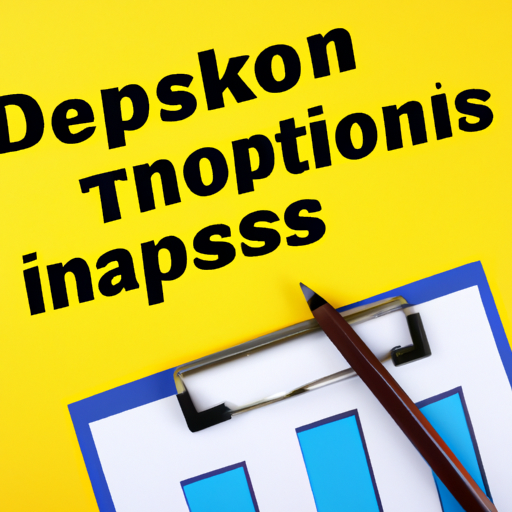What are the market prospects for depression tests?
What are the Market Prospects for Depression Tests?
I. Introduction
Depression is a pervasive mental health disorder that affects millions of individuals worldwide. Accurate diagnosis and effective treatment are crucial for improving the quality of life for those affected. As the understanding of mental health evolves, so too does the market for depression tests, which are essential tools for clinicians and patients alike. This blog post explores the market prospects for depression tests, examining the current landscape, types of tests available, market drivers and challenges, key players, and future trends.
II. Understanding Depression
A. Prevalence and Impact of Depression
Depression is one of the leading causes of disability globally, with the World Health Organization (WHO) estimating that over 264 million people suffer from the disorder. The impact of depression extends beyond the individual, affecting families, communities, and economies. The economic burden of depression is staggering, with costs related to healthcare, lost productivity, and social services running into billions of dollars annually. The social implications are equally significant, as depression can lead to strained relationships, decreased quality of life, and increased risk of suicide.
B. Current Diagnostic Methods
Traditionally, depression has been diagnosed through clinical interviews and self-report questionnaires. Clinicians assess symptoms based on established criteria, such as those outlined in the Diagnostic and Statistical Manual of Mental Disorders (DSM-5). While these methods are widely used, they can be subjective and may not capture the full spectrum of an individual's experience. Emerging technologies, including biological markers and neuroimaging, are being explored to enhance diagnostic accuracy and provide a more comprehensive understanding of depression.
III. Types of Depression Tests
A. Traditional Assessment Tools
Several traditional assessment tools have been developed to evaluate depression severity. The Beck Depression Inventory (BDI) and the Hamilton Depression Rating Scale (HDRS) are two of the most commonly used instruments. These tools rely on self-reported symptoms and clinician assessments, respectively, to gauge the severity of depression and guide treatment decisions.
B. Digital and Online Assessments
With the rise of technology, digital and online assessments have gained popularity. Mobile applications and telehealth platforms offer convenient and accessible ways for individuals to assess their mental health. These tools often incorporate self-report questionnaires and can provide immediate feedback, making them valuable resources for both patients and healthcare providers.
C. Biomarker-Based Tests
Biomarker-based tests are an exciting area of research in the field of depression diagnostics. Blood tests and neuroimaging techniques are being investigated for their potential to identify biological markers associated with depression. These tests could provide objective data to complement traditional assessments, leading to more accurate diagnoses and personalized treatment plans.
IV. Market Drivers
A. Increasing Prevalence of Depression
The rising prevalence of depression is a significant driver of the market for depression tests. As more individuals seek help for their mental health, the demand for effective diagnostic tools continues to grow. This trend is particularly evident in the wake of the COVID-19 pandemic, which has exacerbated mental health issues worldwide.
B. Growing Awareness and Destigmatization of Mental Health
In recent years, there has been a concerted effort to raise awareness about mental health and reduce the stigma associated with seeking help. Campaigns promoting mental health literacy have encouraged individuals to recognize the signs of depression and seek appropriate care. This cultural shift has led to increased demand for depression tests as more people are willing to engage in the diagnostic process.
C. Advances in Technology and Innovation
Technological advancements are transforming the landscape of depression diagnostics. Artificial intelligence (AI) and machine learning are being integrated into diagnostic tools, enhancing their accuracy and efficiency. Additionally, the integration of mental health services into primary care settings is making it easier for individuals to access depression tests and receive timely interventions.
D. Government Initiatives and Funding for Mental Health Research
Governments and health organizations are increasingly recognizing the importance of mental health research and are allocating funding to support the development of innovative diagnostic tools. These initiatives aim to improve access to mental health care and promote early intervention, further driving the market for depression tests.
V. Market Challenges
A. Regulatory Hurdles
Despite the promising prospects for depression tests, regulatory hurdles pose significant challenges. The approval process for new diagnostic tools can be lengthy and complex, delaying the introduction of innovative products to the market. Navigating these regulations requires substantial resources and expertise, which can be a barrier for smaller companies and startups.
B. Variability in Test Accuracy and Reliability
The accuracy and reliability of depression tests can vary significantly, leading to concerns about their effectiveness. Clinicians and patients alike may be hesitant to rely on tests that lack robust validation. Ensuring that depression tests meet high standards of accuracy is essential for building trust in these tools and promoting their widespread adoption.
C. Ethical Considerations in Testing and Treatment
The ethical implications of depression testing and treatment must also be considered. Issues such as informed consent, privacy, and the potential for misdiagnosis raise important questions about the responsible use of diagnostic tools. Stakeholders in the mental health field must navigate these ethical challenges to ensure that patients receive appropriate care.
D. Competition from Alternative Therapies and Interventions
The market for depression tests faces competition from alternative therapies and interventions, such as psychotherapy, medication, and lifestyle changes. As individuals explore various options for managing their mental health, the demand for depression tests may be influenced by the perceived effectiveness of these alternatives.
VI. Key Players in the Market
A. Established Companies
The market for depression tests is populated by established companies, including pharmaceutical firms and diagnostic companies. These organizations have the resources and expertise to develop and market innovative diagnostic tools, often collaborating with academic institutions and research organizations to advance their offerings.
B. Startups and Innovative Entrants
In addition to established players, a growing number of startups and innovative entrants are emerging in the depression testing market. These companies are leveraging technology to create novel assessment tools and platforms, often focusing on digital solutions that cater to the needs of modern consumers.
C. Academic and Research Institutions
Academic and research institutions play a crucial role in advancing the field of depression diagnostics. Through rigorous research and clinical trials, these organizations contribute to the development of new testing methods and help validate existing tools, ensuring that they meet the highest standards of accuracy and reliability.
VII. Future Trends
A. Personalized Medicine and Tailored Treatment Approaches
The future of depression testing is likely to be characterized by personalized medicine and tailored treatment approaches. As our understanding of the biological underpinnings of depression deepens, diagnostic tools may evolve to provide more individualized assessments, allowing for targeted interventions that address the unique needs of each patient.
B. Integration of Mental Health Assessments in Routine Healthcare
The integration of mental health assessments into routine healthcare is another promising trend. As healthcare providers recognize the importance of addressing mental health alongside physical health, depression tests may become a standard part of patient evaluations, leading to earlier detection and intervention.
C. Expansion of Telehealth and Remote Monitoring
The expansion of telehealth and remote monitoring is transforming the way mental health care is delivered. Depression tests conducted through telehealth platforms can increase access to care, particularly for individuals in underserved areas. This trend is likely to continue as technology advances and more people seek convenient options for managing their mental health.
D. Potential for Global Market Growth
The global market for depression tests is poised for significant growth in the coming years. As awareness of mental health issues continues to rise and the demand for effective diagnostic tools increases, stakeholders in the mental health field have a unique opportunity to innovate and expand their offerings to meet the needs of a diverse population.
VIII. Conclusion
In summary, the market prospects for depression tests are promising, driven by increasing prevalence, growing awareness, technological advancements, and supportive government initiatives. However, challenges such as regulatory hurdles, variability in test accuracy, and ethical considerations must be addressed to ensure the responsible development and use of these tools. As the field of mental health continues to evolve, stakeholders must prioritize research and innovation to improve diagnostic accuracy and enhance patient care. The future of depression testing holds great potential, and collaboration among established companies, startups, and academic institutions will be essential in shaping this landscape.
IX. References
1. World Health Organization. (2021). Depression. Retrieved from [WHO website](https://www.who.int/news-room/fact-sheets/detail/depression)
2. American Psychiatric Association. (2013). Diagnostic and Statistical Manual of Mental Disorders (5th ed.). Arlington, VA: American Psychiatric Publishing.
3. National Institute of Mental Health. (2022). Major Depression. Retrieved from [NIMH website](https://www.nimh.nih.gov/health/statistics/major-depression)
4. National Institutes of Health. (2020). Mental Health Research Funding. Retrieved from [NIH website](https://www.nih.gov/)
5. Various academic journals and market research reports on mental health diagnostics and treatment trends.














